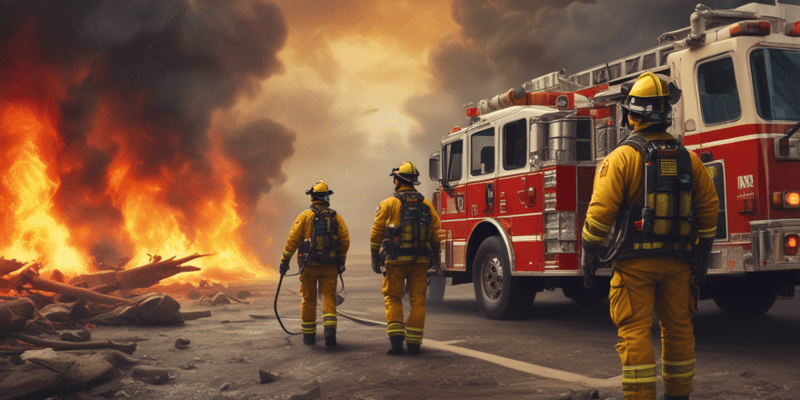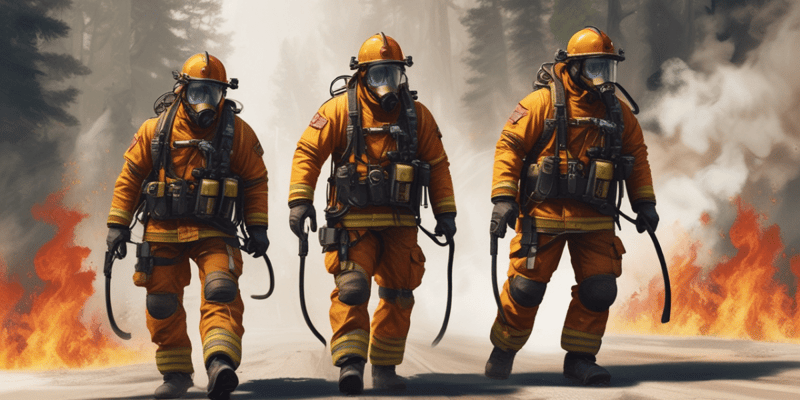Questions and Answers
What method does the TFD use for relay pumping?
Which type of hose connectors are used with TFD 3" lines?
What is the primary role of the first Tulsa engine in a tanker operation?
How much water must always be available during tanker swap out and refill?
Signup and view all the answers
What should the second engine’s tank in a tanker operation be used for?
Signup and view all the answers
What should be done if tenders do not have pumps?
Signup and view all the answers
What is the recommended hose diameter and length per engine for relay pumping in TFD?
Signup and view all the answers
Which mutual aid departments' engines are preferred for use as the second engine in water tender operations?
Signup and view all the answers
How does TFD receive water from a tender without pumps if there's no mutual aid engine available?
Signup and view all the answers
What is the key reason for using two engines during water tender operations?
Signup and view all the answers
Study Notes
Relay Pumping
- TFD uses the "Constant Pressure Method" for relay pumping, as described in the IFSTA Pumping Apparatus Driver/Operator handbook.
- The method involves 150 psi and 1000' of 5" hose per engine.
Water Tender Operations
Tankers with Pumps
- Tankers with pumps can pump to TFD apparatus using a 3" line.
- TFD 3" lines use 2 ½" National Standard Threads, compatible with mutual aid 2 ½" or 3" lines.
- Some tankers may have a 5" Storz discharge.
- When taking water, it is recommended to use two engines:
- First engine: forward engine pumping fire streams.
- Second engine: takes water from the tanker and forwards it to the forward engine, keeping its tank full and only using it as needed.
- Mutual aid departments' engines with 1000 gallon (or greater) water tanks are preferred as the second engine.
Tankers Without Pumps
- Tankers without pumps drop their load into a portable tank.
- An engine then drafts from the portable tank.
- TFD engines do not carry hard suction hose, so water is received in one of two ways:
- From a mutual aid engine drafting from a portable tank.
- Allowing a mutual aid engine to pump the incident, drafting directly from their portable tank.
Studying That Suits You
Use AI to generate personalized quizzes and flashcards to suit your learning preferences.
Description
This quiz covers the procedures and tactics for responding to fires in areas without hydrants, including relay pumping and water tender operations.



